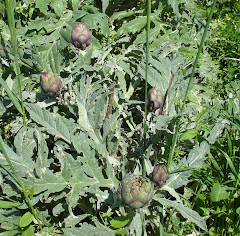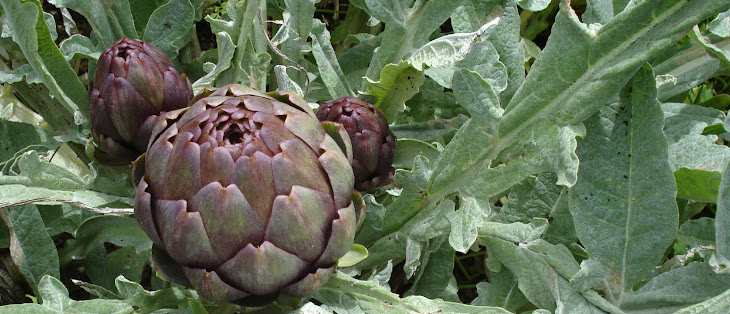We’ve had several days of really hot weather, like summer rather than spring, and it has brought all the flowers out. This rose Banksiae which climbs over the shelter next to our shed is one of my favourites – the flowers are only a couple of centimetres across but there are so many of them. They last just a couple of weeks, so I’m going to celebrate this short flowering period by putting several photos on the blog:
 |  |
 |  |
The cistus flowers have started to appear and the broom is covered with flowers:
 |  |
High Brown Fritillary butterfly
 |  |
Lo Jardinièr saw this High Brown Fritillary butterfly (Argilis adippae) on the windowbox on our balcony.
Two lizards, one with a new tail
 |
 I could clearly see that this lizard had grown a new tail as it looked so different from the body. |
 I liked the way this one seemed to be mirroring the grain of the wood on the garden shed. I liked the way this one seemed to be mirroring the grain of the wood on the garden shed. |
Planting tomatoes and aubergines
Rain is forecast for tomorrow and we wanted to get most of our tomatoes planted out before then. So far we’ve planted: 18 Roma (for bottling), 18 St Pierre (for salads and sauces), 6 Ananas (pineapple, for salads mostly), 6 Languedocienne (a local variety, very heat- and drought- resistant), 5 Coeur de boeuf (for salads), 3 Longue des Andes (seed saved from tomatoes given to us by a friend last year, the first time we’ve grown these). All these were grown from seed we saved, except for the St Pierres for which we used the leftover seeds in a packet from last year. We haven’t bought any tomato seeds this year and hardly any other seeds. We still have three varieties of cherry tomato plants to find places for somewhere.
We bought three grafted aubergine plants (Longue violette) in the village market yesterday and planted them out today. We’ve got one other plant waiting to be planted out and I’d like to have at least one more. We only use grafted plants (grafted onto tomato roots), which we have to buy, because they are so much more productive and we really love aubergines!
 |  |
Next to be planted out will be the pepper plants – numerous varieties – and the courgettes and cucumbers. This is such an exciting time of year!
Beans and no beans
Our broad beans are nearly ready to eat. They are a little late this year and our neighbour was saying that his were too this year after the cold spring, but at least they’re doing well now. I don’t know why we never seem to succeed with other varieties of beans, though. I sowed three rows of haricot beans at the end of March and only 5 or 6 plants have emerged. I’m trying out germinating the seeds in trays of compost and then I’ll plant them out, so that at least I’ll know whether they have germinated. I suspect that the snails eat the seedlings as soon as they appear above the earth.












































